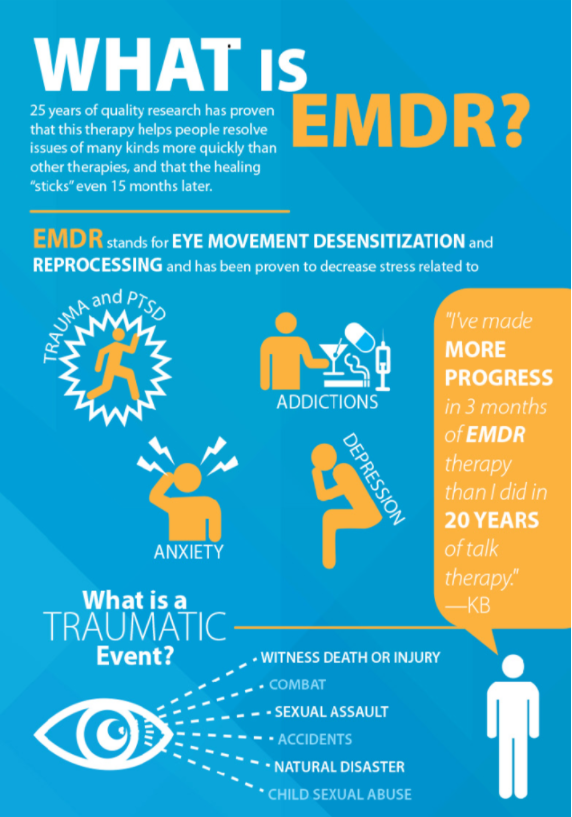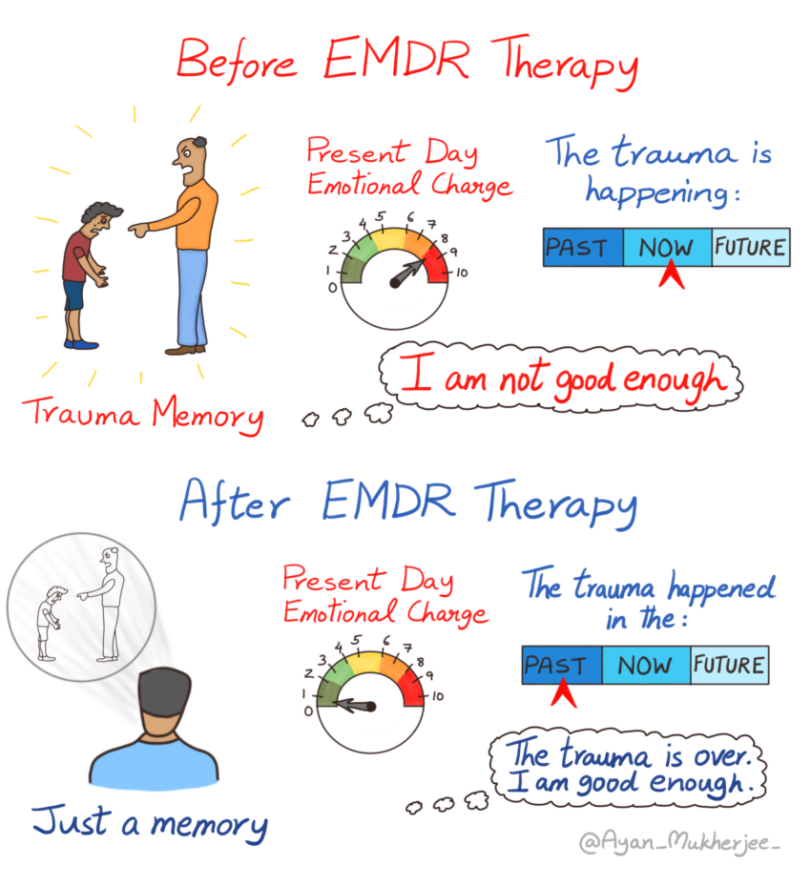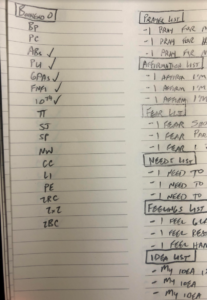
EMDR (Eye Movement Desensitization and Reprocessing) is a therapeutic technique that has proven effective in treating a wide range of issues, including PTSD (Post-traumatic Stress Disorder), panic attacks, phobias, dissociative disorders, depression, alcoholism and addictions, and low self-esteem, among others. It helps clients to process both “big T” traumas (caused by such events as war experiences, assaults, and car accidents) and “little T” traumas (caused by anything that takes away from a client’s positive self-image, such as emotional abuse and neglect). Many controlled research studies have proven that it is effective in treating trauma, often in a much shorter period of time than traditional talk therapy.
When someone has a traumatic experience, the memory of that experience is stored improperly in the brain, so that, emotionally, it feels like it is still going on. EMDR treatment enables the brain to reprocess the memory so that it is put in its proper context. The client still remembers the incident, but it no longer has the emotional charge it once did. It is thought that EMDR works like REM (rapid eye movement) sleep in helping people to process distressing memories.
Source: http://beallpastoralcounseling.com/emdr/

Key Features of EMDR
- Present-focused therapy, with particular interest in the ways past memories activate emotions in the present moment.
- Therapist guides client in accessing memories in order to move them from a place of emotional activation to a more logical, rational place, so that triggers of the past no longer have the same charge.
- Includes a technique called “bilateral stimulation,” where a therapist will guide a client through eye movements, tones or tapping.
What to Expect
During the EMDR process, different emotions and sensations may arise as your brain works to make sense of things. You will be asked to notice your experience and give honest feedback. Whatever you are feeling in the moment is okay and my role as the therapist is to gently guide the process by observing and being curious.

